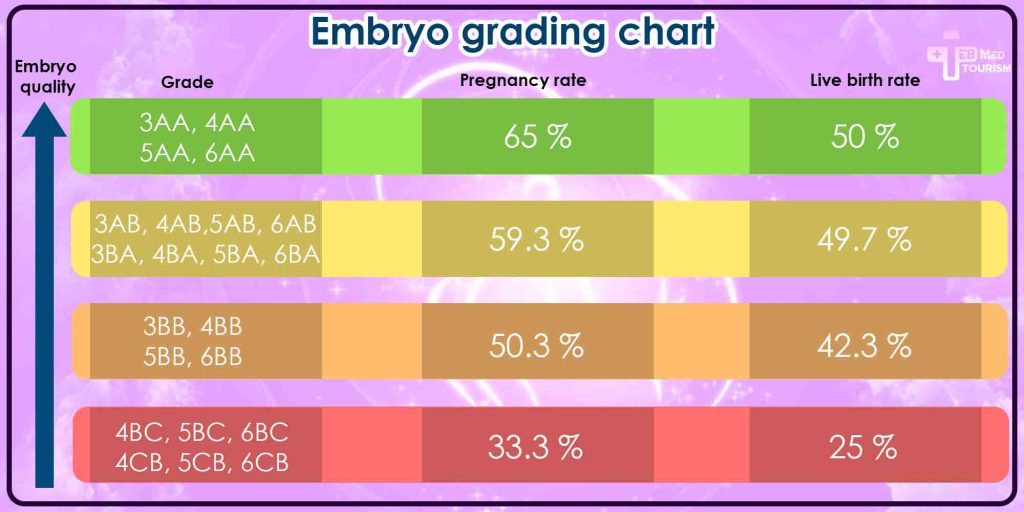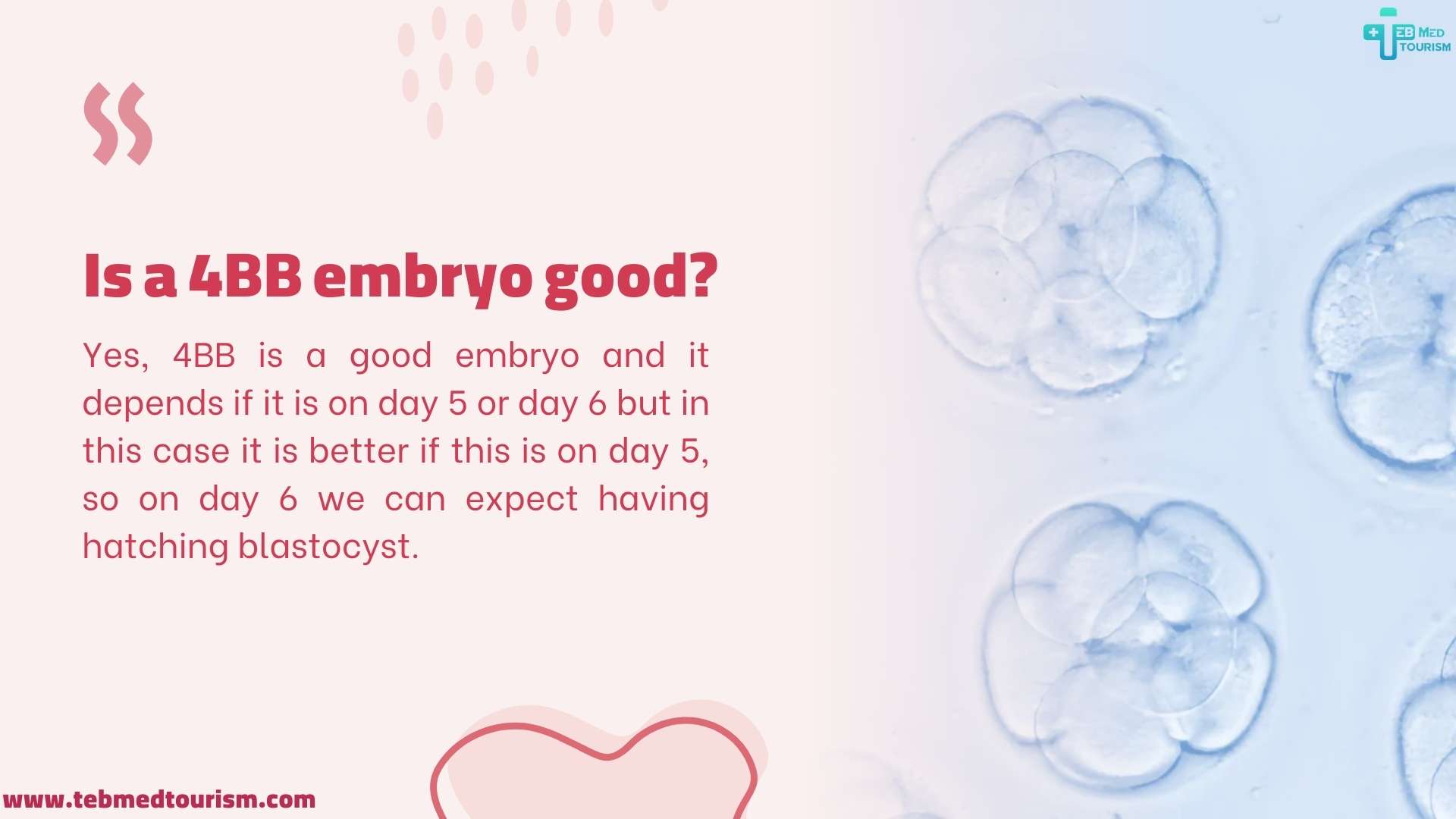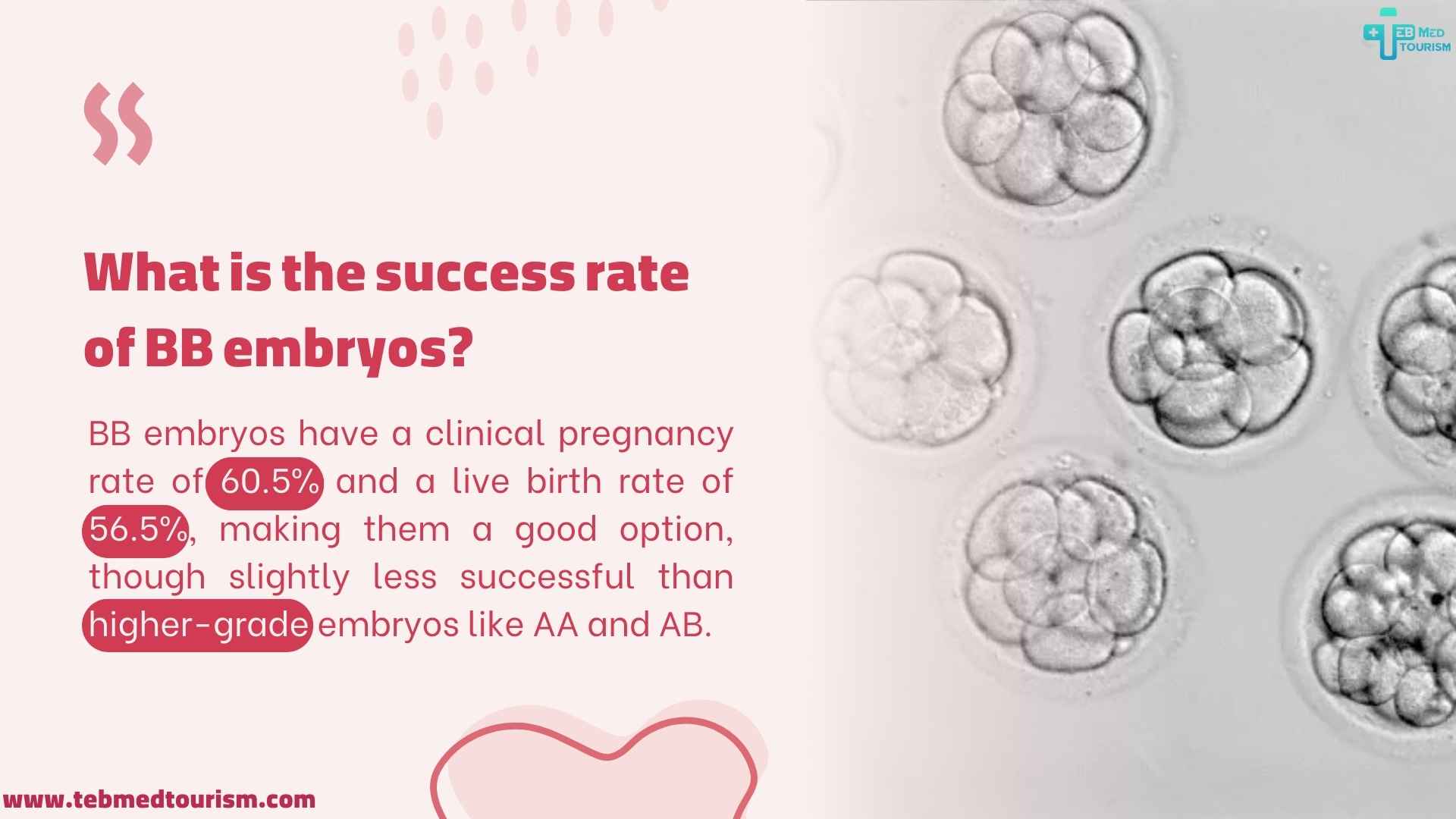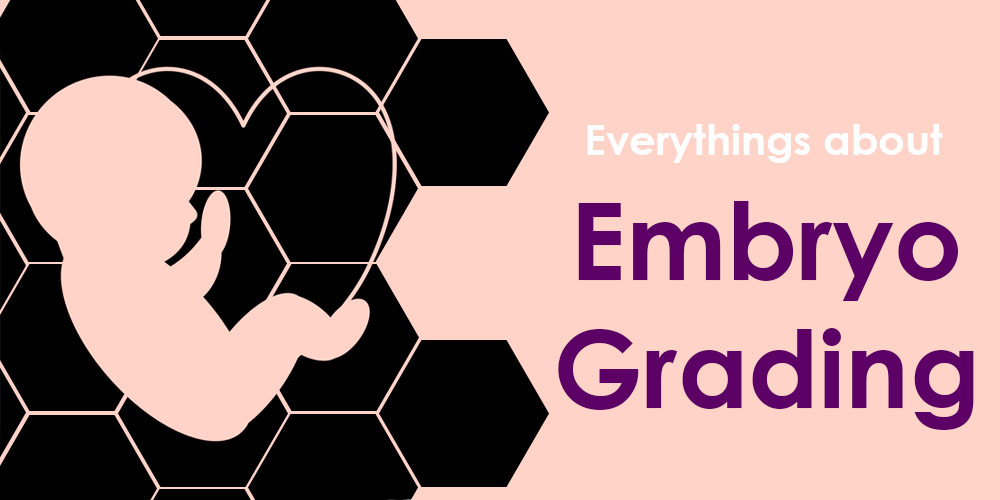In the world of In Vitro Fertilization (IVF), embryo grading plays a pivotal role in determining the chances of a successful pregnancy. As couples and individuals embark on the journey of assisted reproduction, they often encounter the terms "embryo grading", "IVF embryo grading", "embryo grading chart", "embryo quality chart", "embryo grading scale". These terms might seem complex at first, but understanding them is crucial for making informed decisions during IVF treatment. In this comprehensive guide, we will delve into the intricacies of embryo grading, the significance of good quality 5-day embryo blastocysts, and how it all ties into IVF success rates.
What Is Embryo Grading?
What is the best explanation of embryo grading? Embryo grading explained as the process of evaluating the quality and developmental stage of embryos created during IVF treatment. This meticulous assessment helps embryologists identify the embryos with the highest potential for a successful pregnancy. To comprehend embryo grading fully, let’s break it down into its key components:
-
Embryo Grading Chart
Embryo grading is often represented on a chart that categorizes embryos based on their appearance and developmental progress. Sometimes this chart is known as IVF embryo grading chart. It (embryo grading chart) typically includes criteria such as: Cell Number: The number of cells in an embryo at a specific stage. Cell Symmetry: The uniformity in the size and shape of the embryo's cells. Fragmentation: The presence of cell fragments, which can impact embryo quality. Blastocyst Formation: Whether the embryo has reached the blastocyst stage. Each embryo receives a grade or score based on these factors, with higher scores indicating better quality embryos.
-
Good Quality 5-Day Embryo Blastocyst
Among the various stages of embryo development, the 5-day blastocyst stage is often considered ideal for implantation. A good quality 5-day embryo blastocyst is characterized by: A high cell counts. Uniform cell symmetry. Minimal fragmentation. A well-defined blastocoel cavity. A properly formed inner cell mass and trophectoderm. Embryos that meet these criteria are more likely to result in a successful pregnancy when transferred to the uterus.
Embryo Grading Scale
The embryologist will often tell the patient that the blastocyst that has been evaluated consists of a number and two letters, for example 5AA embryo: The embryo grading scale, from 1-6, measures the degree of embryo expansion of the blastocyst cavity and its progress in hatching out of the zona pellucida. The degree of expansion increases as the embryo expands. Totally, it means blastocyte development stage or blastocyte grading! Here we ask this question, how does embryo grading work? Number 1: Early blastocyst is indicated by the blastocele being less than half the volume of the embryo. Number 2: Blastocyst is indicated by the blastocele being greater than or equal to half of the volume of the embryo. Number 3: Full blastocyst is indicated by the blastocele completely filling the embryo. Number 4: Expanded blastocyst is indicated by the blastocele volume being larger than that of the early embryo and the zona pellucida thinning. Number 5: A hatching blastocyst is indicated by the trophectoderm starting to herniate through the zona pellucida. Number 6: Finally, a hatched blastocyst is indicated by the blastocyst having completely escaped from the zona pellucida. The quality of the inner cell mass, which potentially becomes the cells that form the body of the embryo after implantation, is indicated by the first letter on a scale from A to C (A being the highest). Grade A: Many cells of ICM (inner cell mass) are tightly packed. Grade B: In ICM, several cells are loosely grouped. Grade C: ICM have very few cells. The quality of the trophectoderm, the cells that give rise to the placenta and extraembryonic tissues after implantation, is indicated by the second letter on a scale from A to C (A being the highest). Implantation is the process of the human blastocyst attachment to the luminal epithelium of the uterus within six to eight days after fertilization. Grade A: Trophectoderm have many cells forming a tightly knit epithelium Grade B: TE have just few cells. Grade C: Loose epithelium is formed by very few cells of trophectoderm. The grading system assigns high scores like 4AA or 5AA to embryos that are of high quality, but lower scores do not necessarily mean that the embryo cannot implant and develop into a healthy baby. It is unclear which degree of expansion is best, and whether the ICM or TE is more important in determining embryo quality. Another important factor in grading embryos is the day they reach the blastocyst stage. Embryos that reach blastocyst stage on day 5 are considered to be developing well, while those that take 6 or 7 days may indicate an issue with cell division timing. However, even blastocysts that take longer to develop are still capable of implanting. For instance, as embryo quality chart, embryo grading 4bb has less quality than 3aa embryo, 4aa embryo, and 6aa embryo. 
Embryo Grading and Success Rate
What is the best grade for embryo? What grade is good for embryo transfer? Are these questions in your mind? Let’s go to know about it! Blastocysts that are well-developed and have healthy internal structures are more likely to result in successful pregnancies. Studies have shown that transfers using excellent grade blastocysts, such as those with a grade greater than 3AA, have a clinical pregnancy success rate of about 65%. Blastocysts with an average grade, including 4BB, 4AC, 4CA, 2AB, or 2BA embryo, have a success rate of about 50%. Poor quality blastocysts, such as 3BC, 4CB, 4CC, or 2BB, have a pregnancy rate of just 33%. So, 3AA, 4AA, 5AA, 6AA embryo success rate is the most, about 65%. The chart on the right shows the most desirable blastocyst grades, which are indicated in blue and have the greatest likelihood of resulting in pregnancy. Blastocysts in the orange area would be considered poor, while those in the red areas would not be viable and would likely be discarded. However, it's important to note that the actual likelihood of pregnancy depends on more than just the quality of your embryos. The preparation of your surrogate and the skill of the embryologist also play a significant role in the ultimate success. Nonetheless, this chart provides a useful guide to the relative value of the embryos presented in your Day 5 IVF report (embryo grading chart day 5).One of the wishes of couples is to do IVF with them. In TebMedTourism clinic, all embryos are selected from Excellent grade, which has made the IVF success rate in this company to be over 57%, which is higher than the world average, and makes us one of the best clinics in the world.

Embryo grading and gender
Surprisingly high-quality embryos have relationship with gender! According a paper which was released in 2011, Male embryos were 2.6 times more likely to produce stage 5 or 6 blastocysts than female embryos. In conclusion, embryo grading is a crucial aspect of IVF treatment that involves evaluating the quality and developmental stage of embryos to identify those with the highest potential for a successful pregnancy. The grading process involves assessing factors such as cell number, cell symmetry, fragmentation, and blastocyst formation, and assigning a grade or score based on these criteria. A good quality 5 day embryo blastocyst is considered ideal for implantation and is characterized by high cell counts, uniform cell symmetry, minimal fragmentation, a well-defined blastocoel cavity, and a properly formed inner cell mass and trophectoderm. Studies have shown that transfers using excellent grade blastocysts have a higher clinical pregnancy rate than those with average or poor-quality blastocysts. However, it’s important to note that the actual likelihood of pregnancy depends on more than just the quality of the embryos, and the preparation of the surrogate and the skill of the embryologist also play a significant role in the ultimate success. At TebMedTourism clinic, all embryos are selected from Excellent grade, which has resulted in an IVF success rate of over 57%, higher than the world average, making it one of the best clinics in the world. Understanding embryo grading especially knowing about embryo grading chart is crucial for making informed decisions during IVF treatment, and the grading chart provides a useful guide to the relative value of the embryos presented in the Day 5 IVF report.

Frequently Asked Questions about Embryo Grading
What does embryo grading mean?
Embryo grading is the process of evaluating the quality and developmental stage of embryos created during IVF treatment. This meticulous assessment helps embryologists identify the embryos with the highest potential for a successful pregnancy and it represents by embryo grading chart.

Is 4AA or 5AA embryo better?
Based on this system, a high-quality embryo could have a grade of 4AA or 5AA, but embryos with lower scores are still capable of implanting and growing into a healthy baby. For example, there's not much data to support which degree of expansion is best, so it's hard to say if a 4AA embryo is better than 5AA.
What is the average grade of an embryo?
The average grade of an embryo in IVF can vary, but typically, embryos with a grade of 3BB or 4BB may be considered average quality. However, it's important to note that grading criteria and standards can differ between clinics, and each case is unique. Higher-grade embryos, such as 4AA or 5AA, are often associated with better chances of successful pregnancy. Can Grade C blastocyst be successful?
What is a good embryo grade?
In IVF, a high-quality embryo is often indicated by higher scores, such as 4AA or 5AA. These embryos demonstrate advanced blastocyst development, minimal fragmentation, uniform cell symmetry, and a well-defined blastocoel cavity. When such high-grade embryos are transferred to the uterus, they are more likely to result in a successful pregnancy.
Is a 3AA embryo good?
According to the article, 3AA embryo is part of the group of excellent embryos and can have a success rate of 65%. So, if your embryos are not in this category, we congratulate you!
What is the most successful embryo grade?
The most successful embryo grades in IVF are typically represented by embryos with grades like 4AA, 5AA or 6AA. These embryos have advanced blastocyst development, minimal fragmentation, and uniform cell symmetry. Studies have shown that transfers using excellent grade blastocysts like these have the highest clinical pregnancy success rates, often around 65%.
What is the success rate of embryos by grade?
The quality of embryos in IVF affects their success rate, with high-grade embryos like 4AA, 5AA, or 6AA having the highest success rates at around 65%. Embryos with an average grade, such as 4BB, 4AC, or 2AB, have success rates of about 50%, while poor quality embryos like 3BC, 4CB, or 2BB have lower success rates of around 33%. Factors like blastocyst development, cell symmetry, and fragmentation influence these success rates. However, it's important to note that other factors and individual circumstances also impact IVF success beyond just the grade of the embryo.
What is the success rate of good quality embryos?
Good quality embryos, often represented by high grades like 4AA, 5AA, or 6AA, have a higher success rate in IVF. Studies indicate that transfers using excellent grade blastocysts like these can achieve a clinical pregnancy success rate of approximately 65%. These embryos are more likely to result in a successful pregnancy when transferred to the uterus.
What is the success rate of BA grade embryos?
The success rate of BA grade embryos is typically lower compared to higher-grade embryos. BA grade embryos may have reduced chances of successful pregnancy, with rates often below the average. However, the exact success rate can still vary depending on various factors and individual circumstances during IVF treatment. If you have more information, read the “Embryo Grading and Success Rate” in this article.
What is the success rate of a Grade 3 blastocyst?
The success rate of Grade 3 blastocysts in IVF can differ, but they are generally considered to be of lower quality compared to higher-grade embryos. Their success rate is usually lower than embryos with higher grades like 4AA or 5AA, and typically ranges from 30% to 45%, depending on various factors and individual circumstances during IVF treatment. It's crucial to seek advice from a fertility specialist for a more accurate evaluation based on your particular situation.
Can poor quality day 3 embryos improve?
Following the initial grading, there is a possibility for the quality of embryos to improve. Grading is not a definite indicator of success: While higher grades are associated with better pregnancy rates and more live births, lower grading does not necessarily mean that successful outcomes and the birth of healthy children are impossible.
What percentage of embryos survive to day 3?
Typically, around 30 to 50 percent of embryos reach the blastocyst stage. The reason why some embryos fail to reach this stage is likely due to a defect within the embryo. For instance, if there are 10 embryos on day 3 and we choose two to transfer on that same day, it is possible that we may not have selected the correct embryos.
what does the number mean in embryo grading?
Number means embryo cavity’s expansion from 1 to 6. Number 1 is the minimum expansion level of embryo cavity and number 6 is fully expanded blastocyst. On the other word, it represents a blastocyst grading.
What is good quality 5 day embryo blastocyst?
A good quality 5-day embryo blastocyst is characterized by specific features indicating its suitability for implantation and potential for a successful pregnancy. These features include high cell counts, uniform cell symmetry, minimal fragmentation, a well-defined blastocoel cavity, and properly formed inner cell mass and trophectoderm. Embryos reaching this stage on day 5 of development are considered ideal for transfer, as they demonstrate optimal developmental progress and structural integrity. This classification, often denoted by grades such as 3AA, 4AA, 5AA, or 6AA, signifies superior quality embryos with a higher likelihood of successful implantation and pregnancy.





Comments & Questions